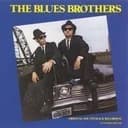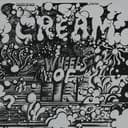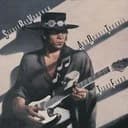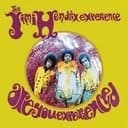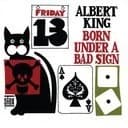Understanding enharmonic equivalents is essential for practical musicianship, as the same pitches can be notated differently depending on harmonic context and key signature conventions. The A♯ Blues Scale contains the exact same pitches as the B♭ Blues Scale—A♯ is B♭, C♯ is D♭, D♯ is E♭, and G♯ is A♭—but the sharp notation creates complex key signatures (ten sharps) that are impractical for reading and communication. In contrast, B♭'s key signature uses two flats, making it far more accessible for musicians in performance settings. This preference for flat keys in blues and jazz stems from the instruments that defined these genres: saxophones, trumpets, and clarinets are typically B♭ or E♭ instruments, making flat key signatures more natural for horn players. While digital instruments and theoretical discussions may reference A♯, professional musicians almost universally think and communicate in terms of B♭ when working with this scale. When practicing or composing, use B♭ Blues Scale notation to align with standard musical convention and facilitate collaboration with other musicians.
How to Use the Blues Scale in Improvisation
The A♯/B♭ Blues Scale provides exceptional versatility for improvisation over blues progressions, particularly the 12-bar blues form in A♯/B♭ (A♯7-D♯7-A♯7-F7-D♯7-A♯7 or B♭7-E♭7-B♭7-F7-E♭7-B♭7). One of the scale's most valuable characteristics is its universal compatibility—every note functions effectively over all three dominant seventh chords (I7, IV7, V7) in a blues progression, eliminating the need for constant scale switching during solos. The blue note (E/F♭, the ♭5) serves as the emotional focal point: approach it from neighboring tones and resolve to either D♯/E♭ (the 4th) or F (the 5th) to create authentic blues phrasing. Effective improvisation requires more than scale knowledge—develop your rhythmic vocabulary with shuffle patterns, triplet figures, and syncopated accents that give blues its characteristic swing feel. Practice call-and-response patterns where you "ask a question" with one phrase and "answer" with another, mimicking the conversational nature of blues tradition. The scale works equally well in rock, funk, and jazz contexts, particularly over dominant seventh chord vamps. For advanced harmonic applications, combine the blues scale with A♯ Minor Pentatonic or modal approaches to expand your improvisational palette.
Blues Scale vs Minor Pentatonic Comparison
The relationship between the A♯/B♭ Blues Scale and A♯ Minor Pentatonic Scale is fundamental to understanding blues vocabulary. The minor pentatonic contains five notes (A♯-C♯-D♯-F-G♯ or B♭-D♭-E♭-F-A♭), while the blues scale adds a single chromatic passing tone: the ♭5 (E/F♭). This additional note—positioned between the 4th and 5th degrees—introduces the tritone interval that creates blues music's signature tension and dissonance. The minor pentatonic offers a stable, consonant foundation that works safely over minor and dominant chords, while the blues scale adds the "dangerous" note that gives blues its edgy, expressive character. In practice, most blues musicians move fluidly between both scales, treating the ♭5 as an optional embellishment rather than a required note. This flexibility allows for dynamic phrasing: use minor pentatonic patterns for stability and resolution, then insert the blue note for moments of tension and emotional impact. The ♭5 functions best as a passing tone—land on it briefly while moving between other scale degrees—or as a target note that receives emphasis through vibrato, bending, or rhythmic placement. When developing your blues vocabulary, master the minor pentatonic framework first, then gradually incorporate the blue note to add color and sophistication to your improvisations.
Common Blues Progressions
The A♯/B♭ Blues Scale navigates blues progressions with remarkable efficiency, making it an essential tool for any improvising musician. The foundational 12-bar blues progression in A♯/B♭ follows this structure: A♯7/B♭7 (4 bars) - D♯7/E♭7 (2 bars) - A♯7/B♭7 (2 bars) - F7 (1 bar) - D♯7/E♭7 (1 bar) - A♯7/B♭7 (2 bars). This I-IV-V chord movement (A♯7-D♯7-F7 or B♭7-E♭7-F7) creates the tension-and-resolution cycle that defines blues harmony, and the blues scale contains notes that relate organically to all three chords. Beyond the standard 12-bar form, the blues scale works over "quick-change" variations (IV7 chord in bar 2), 8-bar blues structures, one-chord vamps (static A♯7/B♭7 or A♯m7/B♭m7 grooves), and extended jazz-blues progressions that incorporate ii-V-I turnarounds and chromatic substitutions. To create melodically sophisticated improvisations, emphasize chord tones (A♯/B♭, C♯/D♭, F, G♯/A♭) on downbeats and strong rhythmic positions, using the blues scale notes as connecting material between these harmonic anchors. The scale's versatility extends far beyond traditional blues—it appears in rock power-chord progressions, funk grooves, soul ballads, and contemporary R&B productions. Practice playing the scale over various tempos and feels (slow blues, shuffle, straight-eighth rock, funky sixteenth-note grooves) to develop fluency across multiple stylistic contexts.
Famous Applications and Artists
The blues scale has shaped the vocabulary of virtually every important blues, rock, and jazz musician of the past century, making it one of the most influential scales in popular music history. B.B. King's approach to the blues scale epitomizes "less is more"—his economical note choices, precise vibrato, and expressive string bending demonstrate how maximum emotional impact can be achieved with minimal material. Eric Clapton's "Crossroads" solo showcases the blues scale's power in high-energy rock contexts, with rapid-fire pentatonic and blues scale runs that have inspired generations of guitarists. Stevie Ray Vaughan's "Pride and Joy" and "Texas Flood" demonstrate the scale's application in Texas shuffle grooves, where aggressive string bending and rhythmic precision create explosive, dynamic solos. Jazz legends like Miles Davis, John Coltrane, and Herbie Hancock incorporated blues scale vocabulary into modal and post-bop contexts, proving the scale's relevance extends beyond its folk origins. In rock history, guitarists from Jimi Hendrix and Jimmy Page to Slash and John Mayer have built iconic riffs and memorable solos from blues scale patterns. The scale's influence permeates contemporary music as well—artists like Gary Clark Jr., Joe Bonamassa, and Derek Trucks continue to explore its expressive possibilities in modern blues-rock contexts. Even in genres seemingly distant from blues—hip-hop, electronic music, and pop—producers sample and reference blues scale melodies to add soulful character and emotional depth. Learning the blues scale connects you directly to this vast musical lineage and provides an essential foundation for authentic improvisation across virtually every style of contemporary music.
